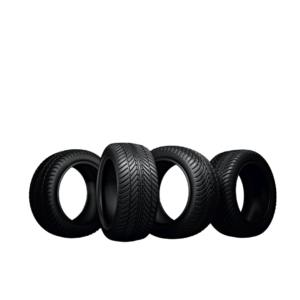09 Most Common Tire Damage and Their Causes


Introduction
Tires are essential for a safe and comfortable ride, but they can be damaged in many ways. In this blog post, we’ll look at the seven most prevalent types of tire damage and the underlying causes behind each.
7 Most Common Tire Damage
1. Puncture
One of the most common difficulties is tire punctures. These happen when foreign things, like nails or sharp debris, puncture the tire’s surface. Punctures can cause progressive air loss or sudden blowouts, threatening the tire’s integrity and safety.
- Inadequate tire tread depth
- Poor road conditions, especially in construction zones
- Lack of puncture-resistant materials in the tire construction
2. Cuts and Tears
Cuts and tears on tires can be caused by sharp objects or driving on uneven terrain. These damages impair the tire’s structure, increasing the likelihood of a blowout.
- Impact with debris such as rocks or broken glass
- Insufficient tire protection in off-road conditions
- Tire age and material degradation
3. Wear on the Tread
Wear on the tread is an inevitable result of frequent use and exposure to road conditions. The tire’s capacity to maintain traction is impacted as the tread depth diminishes over time, particularly in slick or rainy circumstances.
- Proper tire rotation practices
- Maintaining recommended tire pressure
- Balanced vehicle load distribution
4. Blisters and Bulges
Blisters and bulges on the sidewall of the tire damage could be signs of internal deterioration. Impact with curbs, potholes, or other obstructions may cause this. A tire that has cracks or swells presents a serious risk to safety if it is used continuously.
- Impact with potholes, curbs, or other obstacles
- Manufacturing defects
- Inadequate tire maintenance and inspections
5. Overloading
One of the most frequent ways to damage tires is to exceed their load-carrying capacity. When a tire is overloaded, it experiences excessive stress that can cause overheating, tread separation, and decreased performance in general.
- Regularly checking the vehicle’s load capacity
- Properly distributing the load in the vehicle
- Avoiding carrying excessive weight for extended periods
6. Underinflation
Several problems are frequently caused by minimal tire pressure. Increased rolling resistance, overheating, and uneven tread wear are all symptoms of underinflated tires. In addition to reducing fuel efficiency, this also presents safety risks.
- Neglecting regular tire pressure checks
- Seasonal temperature fluctuations affecting tire pressure
- Gradual air loss due to damaged valve stems or wheel components
7. Problems with Alignment
Uneven tire wear might result from improper wheel alignment. Uneven tread patterns from misaligned wheels shorten tire life and reduce performance. Frequent wheel alignments assist in avoiding needless wear and strain.
- Impact with potholes or road hazards
- Routine alignment checks during regular maintenance
- Adjusting alignment after suspension or steering system repairs
8. Effective Storage
Appropriate storage is crucial if you need to store seasonal tires or have spares. Tires should be kept out of direct sunlight and heat sources in a cool, dry location. Remain away from chemicals, solvents, and oils since they can cause the rubber to deteriorate. Tire covers assist preserve the integrity of tires while they are being stored by protecting them from sunlight and ozone in the atmosphere.
9. Pick the Right Tires

Choosing the right tires has a big impact on (Tire Damage) how long they last for your vehicle and the type of driving you do. To find the proper tire size, load index, and speed rating, consult the vehicle’s owner’s manual or a qualified mechanic. In addition, take into account specialty or all-season tires depending on the local weather. Tires that are properly suited improve safety, longevity, and performance.
Conclusion
Maintaining the highest level of vehicle safety and performance requires understanding the common types of tire damage and their causes. You can prolong the life of your tires and improve your driving experience by doing routine tire inspections, maintaining them properly, and giving quick attention to any symptoms of degradation.
Stay connected with us on Instagram , LinkedIn and blogs for more insights and updates
